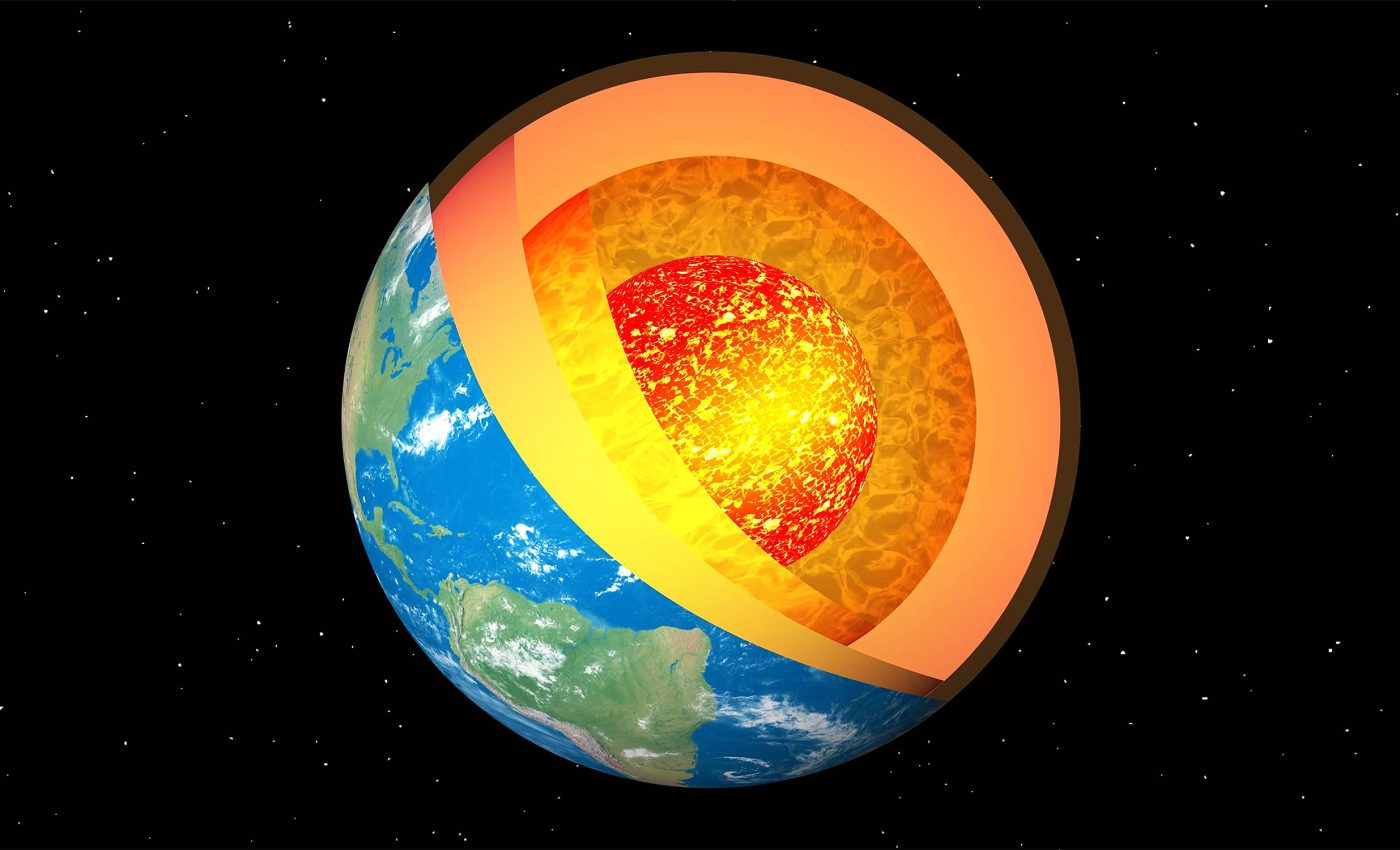Earth's inner core is rapidly changing and now "rotating backwards"
03-30-2025

By Eric Ralls
Earth.com staff writer
It’s not much of a stretch to say that Earth’s inner structure, especially the innermost spherical core, has stupefied scientists for generations. It sits over 3,000 miles below the surface, smaller than the Moon yet massive enough to play a big part in Earth’s magnetic field.
A recent study in Nature Geoscience points to changes that started around 2010, suggesting Earth’s inner core’s spin was slowing.
In effect, it was found to be to be reversing and backtracking relative to the planet’s surface. This discovery has sparked fresh conversations about how the planet’s interior behaves over time.
Geophysicists have used earthquake signals from nearly every continent to probe the inner core, which is surrounded by a swirling layer of liquid metal. Findings point to structural shifts in the iron sphere that raise new questions.
After two decades of debate, investigators feel more confident linking these signals to an actual slowdown rather than an imagined event.
John Vidale, Dean’s Professor of Earth Sciences at the USC Dornsife College of Letters, Arts and Sciences, worked on the project with Wei Wang of the Chinese Academy of Sciences.
Innermost layers of Earth’s interior Earth’s interior can be divided into several layers: the crust, the mantle, the liquid outer core, and the solid inner core at the center. Many scientists have studied how the inner core moves relative to the mantle and crust.
Some found evidence that the core once rotated faster than the rest of Earth. Others noticed it might be easing up.
The latest data points to “unambiguous evidence” of a slower pace starting around 2010, landing it at a speed slightly below that of Earth’s surface.
“When I first saw the seismograms that hinted at this change, I was stumped. But when we found two dozen more observations signaling the same pattern, the result was inescapable,” Vidale explained.
“The inner core had slowed down for the first time in many decades. Other scientists have recently argued for similar and different models, but our latest study provides the most convincing resolution.”
... Earth’s inner core is “backtracking”Some prior research indicated that the inner core might be reversing itself. The new results add weight to that possibility by suggesting the core’s rotation has slowed and even begun shifting direction compared to Earth’s outer layers.
Vidale “didn’t set out to define the physical nature of the inner core.” Yet the project unexpectedly uncovered more than just a slowdown in rotation.
“What we ended up discovering is evidence that the near surface of Earth’s inner core undergoes structural change,” Vidale said.
Shifting layers deep underground might explain certain fluctuations in day length, but these effects are so slight that most people never detect them.
The team believes dynamic interactions between the liquid outer core and dense mantle zones drive these shifts, making the inner core’s movement appear to switch course from time to time...
earth.com |





